- PRÉSENTATION DE L'EPhEP
- L'École
- Les enseignements
- Un Cursus Général, un Cursus Spécialisé
- Le Cursus Général et ses modalités de contrôle
- Le Cursus Spécialisé
- Les Modules de formation Théorique (MTh)
- Le Module de formation Pratique (MP)
- Obligations de volume horaire
- Le Stage Seul
- Le Practicum Seul
- Modalités de contrôle des connaissances du Cursus Spécialisé
- Les enseignants
- Inscriptions
- Politique qualité de l'EPhEP
- Exposé des motifs
- Introduction au travail de l'année
- Livret des Enseignements
- Édito
- Bibliothèque Recherches
- Les dossiers de l'EPhEP
- Cours et conférences : extraits
- Conférences récentes
- Théorie / concepts
- Psychopathologie des névroses
- Psychopathologie des psychoses
- Psychopathologie de l'enfant
- Psychopathologie de l'adolescent
- Questions féminines
- Cognitivisme
- Neurosciences
- Psychothérapie institutionnelle
- Linguistique - signifiant - discours
- Philosophie
- Logique et topologie
- Anthropologie
- Histoire
- Lien social - institutions
- Droit
- Vidéothèque
- Vidéos récentes
- Théorie / concepts
- Psychopathologie des névroses
- Psychopathologie des psychoses
- Psychopathologie de l'enfant
- Psychopathologie de l'adolescent
- Questions féminines
- Cognitivisme
- Neurosciences
- Psychothérapie institutionnelle
- systemie
- Linguistique - signifiant - discours
- Langue - lalangue - la lettre - littérature - arts
- Philosophie
- Anthropologie
- Logique - topologie
- Histoire
- Lien social - Institutions
- Droit
- Parutions
- Dialogues
Agenda
Journées
Actualités
ALI-Bretagne et Collège de Psychiatrie Paris
04/05/2024 - 09:30
Parutions
Claude Landman, Stéphane Thibierge

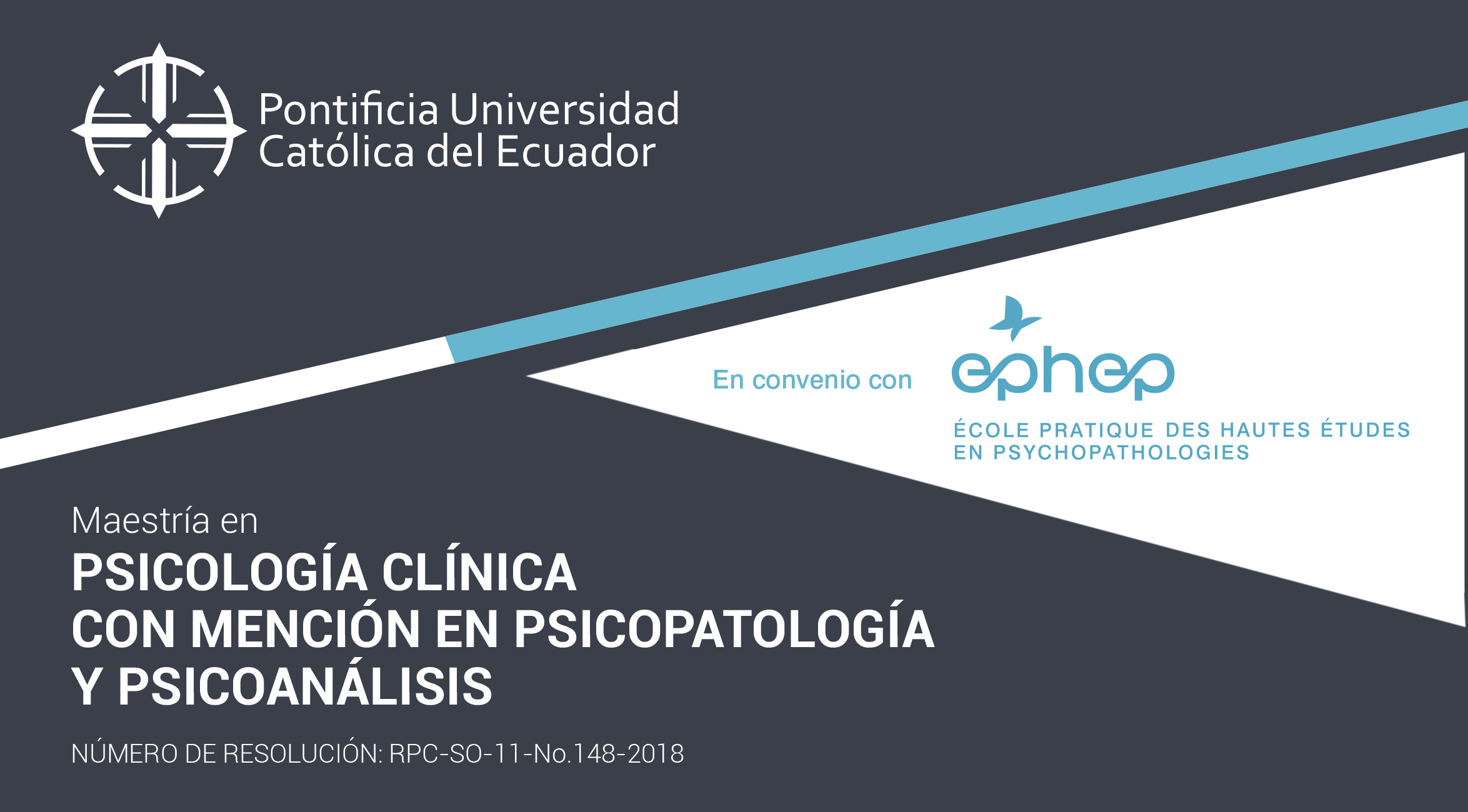
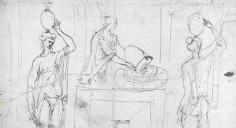

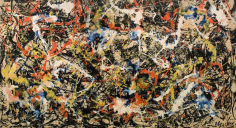
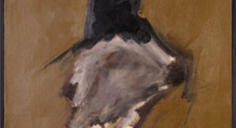
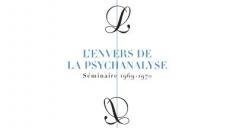

Situated in Draft G, in his letter to Fliess in 1895, Freud outlines a schematic diagram of sexuality, divided along the lines of a somatic-psyche boundary and an ego boundary. It depicts a quadrant with a psyche-soma frontier and an ego frontier.[2] It is interesting to note that the schema is embedded in Freud’s paper on ‘Melancholia’, in which he states “The affect corresponding to melancholia is that of mourning- that is, longing for something lost. Thus in Melancholia it must be a question of a loss- a loss in instinctual life”.[3] We see melancholia in other discourses in the clinic, where “the shadow of the object, has fallen on the ego”,[4] where object loss retreats to ego loss. In these presentations, there is a persistent encounter with the Real of loss, whereas in the work of mourning there is usually an endpoint to grief, according to Freud. In the discourse of the hysteric there is inescapable proximity to the Real of loss, aggravated by the repression of the phallic signifier.
What “commands from the place which marks pure loss, pure hole, pure and simple which organises the phantasy?.... To the question of who commands, analysis replies by showing them from where it is commanded. It commands at the level of this ça, le ça, the id, the unconscious… The subject lives from then in a dependency on he who organises. It is from this pure hole that the signifier takes his authority”.[5] The id that “great reservoir of libido”[6] and instinctual energy remains the driving force of the subject. Springing from this hole in the Real, the phantasy, “an image set to work in a signifying structure”, is organised.[7] Simultaneously it provides a defence against the real of loss, it both pacifies the Real and because of its construction, the Real loses its power.
In the ‘Three Essays’, Freud describes the drives as “the psychical representative of an endosomatic, continuously flowing source of stimulation….lying on the frontier between the mental and the physical”.[8] The source and the pressure of the drive arise from the somatic organs, whilst the object and aim are in the field of the psyche. The somatic domain of the drive is what Lacan refers to as the Real…the impossible, a domain distinguished by its separation from the field of the pleasure principle, by its desexualisation”.[9] The body, is home to the drives and it repeats habitually what they are doing to us and for us. Sexuality comes into play through the mediation of the partial drives, which Lacan names as the oral, anal, scopic and invocatory. The setting in motion of the process of sexual excitation, occurs through the excitation of the skin and the sensory zones, the erogenous zones. “The significance of the erotogenic zones as apparatuses subordinate to the genitals and as substitutes for them is, among all the psychoneurosis, most clearly to be seen in hysteria”.[10]
For Freud “the aim of the Drive is in every instance, satisfaction which can be only obtained by removing the state of stimulation at the source of the instinct”.[11] The drives are an attempt to break through the state of satisfaction. This primary state of satisfaction, provides a homeostatic regulator in the subject. However, for Lacan in this dialectic, no object of any need can satisfy the drive. Lacan gives an example “Even when you stuff the mouth - the mouth that opens in the register of the drive-it is not food that satisfies it, it is as one says, the pleasure of the mouth”.[12]… for the object of the oral drive, it is not a question of food, nor the mother’s care, but the breast as object… objet a. To situate this in the realm of satisfaction, it requires that the drive moves around the object. “The objet petit a is not the origin of the oral drive. It is not introduced as the original food. It is introduced from the fact that no food will ever satisfy the oral drive, except by circumventing the eternally lacking object”.[13] The drives pulsate around an original loss and for the hysteric loss itself becomes an object. The circuit of the drive is caught up in the loop of the desire of the Other. “The passage from the oral drive to the anal drive can be produced not by a process of maturation, but by the intervention of something that does not belong to the field of the drive-by the intervention, the overthrow of the demand of the Other”.[14]
The search for satisfaction is repeated by the subject as a means of covering the gaping hole. Is it possible that the primordial experience is one, not of satisfaction, but of dissatisfaction and it is the impossibility of satisfaction which leaves a trace? It is precisely this Real and the Other’s response to it, via the construction of the phantasy that is a determining factor in the structuring of the subject. Is subjectivity thus founded, not on satisfaction, but on dissatisfaction and it is on this backcloth that the discourse of the hysteric is situated, in part a defence, she believes she is yet to be satisfied, a body (encorps) to be satisfied yet (encore).[15]
The satisfaction of the drive is not a closing of the circuit, but it is a re-charging of the circuit, through “its movement around the object”.[16] The real source of enjoyment is the repetitive movement in the circuit of the drive. This is to be distinguished from Freud’s concept of the pleasure principle which is based on the satisfaction of the drive. For Lacan “It is not the Law itself that bars the subjects access to Jouissance-rather it creates out of an almost natural barrier, a barred subject. For it is pleasure that sets the limit on jouissance”.[17] Lacan differentiated several modes of jouissance. For the purpose of this paper, we will refer to two, namely, jouissance of the Other and phallic jouissance. This Other jouissance developed in ‘Encore’, is a jouissance not inscribed in the repetitive circuit of the Drive, but in the enjoying substance of the body, which insists in the body. “ Enjoying has the fundamental property that it is, one person’s body that enjoys a part of the Other’s body”.[18] The feminine subject’s relation to the Other, correlates with a jouissance beyond the phallus. This Other jouissance, a jouissance in the Real, is outside of both language and phallic jouissance and limitless. It has nothing to do with sexual pleasure, originating elsewhere, it belongs to being. Being not- whole is what Lacan refers to as not wholly situating oneself in the phallic function, which he ascribes to THE Woman. It is this Other jouissance which makes her not whole[19] This Other jouissance is a “supplementary jouissance, compared to what the phallic function designates by way of jouissance…. If I said complementary, what a mess we would be in. We would fall back into the whole”. ……Woman content themselves, any woman contents herself with being not-whole, with the jouissance in question….[20] This Other jouissance cannot be represented. However, it can be traced through THE Woman’s attempts to give a body to what she is, through her appeal to the other woman, the Real woman. The hysterical question of what is it to be a woman, is no longer articulated in its relation to the phallus but to the not-whole.
There is no jouissance outside the body. Situated at the juncture of the symbolic and the Real, it is phallic jouissance and enjoyment of the signifier which puts a limit on this Other enjoyment. Language phallicises jouissance by transforming it into a sexual or phallic jouissance. It is forbidden to him who speaks. “It is precisely that the said Jouissance speaks, that the sexual relationship is not”.[21] Is the contrary also true, that jouissance empties out the body of the speaking being?
The woman is not-whole in relation to the phallic function and for the man, Lacan says “phallic jouissance is the obstacle to which man does not come. I would say to enjoy woman’s body, precisely because what he enjoys is the jouissance of the organ”. ,…. Jouissance qua sexual is phallic, in other words it is not related to the Other as such”.[22]. Lacan is here relating the Woman as the Other sex, Men are, therefore in relation to the Other sex as objet a via the phantasy. Is this the juncture which designates the missed encounter, a point where we recognized the absence of sexual rapport? While the woman lends her body to the jouissance of another body, the hysteric does not offer her body. She withdraws it in so far as it may become the instrument of the master. Hysterical jouissance is a jouissance of being deprived of the phallic signifier, a signifier she represses. Instead lack is taken as an object, an object of loss not as a cause of desire. This is the second movement of loss, which hooks up with loss of dissatisfaction of the drive.
It was via the image that Lacan first approached the question of the body and to explain hysterical phenomenon…… The mirror stage, we understand “is an identification…namely the transformation that takes place in the subject when he assumes an image.… the I is precipitated in a primordial form, before it is objectified in the dialectic of identification with the other…. the form situates the agency of the ego, before it’s social determination, in a fictional direction”.[23] The function of the imago is to establish a relation between the organism and reality. This capture in the mirror unifies the fragmented body. I have an image of myself through my counterpart, a small other. But there is also a dissymmetry here, because the hysteric refuses to see herself as the same as her counterpart. The unified body gets translated into the signifier I, an I which has a body but has alienated his being. This defensive structuring provides “a function of méconnaissance that characterizes the ego”.[24]
According to Melman, there are two clinical traits which the construction of the imago evokes. The first trait “the image we have of our own body, we cannot auto-represent it for ourselves except in its totality and this no matter what the anatomical real is…. we have a mental incapacity to represent our body outside it’s totality”.[25] The image of the totality remains intact irrespective of what happens to the body. It is a defence against fragmentation and a covering over of lack. The woman tries to resolve with the image, the question of femininity.
The second trait….. At the level of the imaginary, there is not a proper bodily trait at the level of the imago which will permit us to distinguish or to specify the other sex. ”At the level of the image there is, after all, no sexual identification. That which we identify is not the image of a man or a woman, but an image…..the hiding of the genital zones contributes to neutralizing the imago of the body with regards to sex…...”.[26] While the drives or partial drives may orientate the subject towards sexuality, “the human being has always to learn from scratch from the Other, what he has to do, as a man or a woman..….. sexuality is represented in the psyche by a relation of the subject that is deduced from something other than sexuality itself. Sexuality is established in the field of the subject by a way that is of lack”.[27]
How do we know that the image is not just an illusion? To sustain the image there has to be a response from the Other from the beginning. If there hasn’t been a response from the beginning, then the image filled with erotic investment, is capable of breaking at any time…. the edifice crumbles.[28] The image on its own is just an image. It has to have symbolic recognition.
What supports us as One is not what the image gives back to us, but le ça, and language. The body is an affect of the word. It is the chain of signifiers that make the body exist. Being is only realized when the subject finds himself represented by a signifier. “The Other is the locus in which is situated the chain of the signifier that governs whatever may be present of the subject- it is the field of that living being, in which the subject has to appear ”.[29] “What makes a commandment for the speaking being is a place, or rather a definite hole locks hysteria into a rather vague image as if the symbolic is not able to reduce that which covers the imaginary of the phantasy. The imaginary of the phantasy is necessary to give a meaning to what the Other could demand of us. And it is this object demanded by Le Grand Autre which will found the desire of the subject”.[30] The objet a occupies this place, this hole and it from this place that that the signifier One, the S1 takes its authority. From then it will take on an imperative value.[31]
The master signifier, S1, as imperative operator, as superego, performs two functions; It provides castration for the subject, revealed in the throwback to the archaic superego.” Castration, in this instance, “ is having to renounce the impossible capture of the body of the maternal Grand Autre”.[32] Why does the hysteric repress S1 rather than renounce it, asks Melman “because to maintain herself from a place Other, she inserts herself from then on in an order of demands, which from then on become very different. An order structured in such a way that it has to do with he who has come to this place, not only to desire, but to please; not only to have to enjoy, but to have to be loved. To occupy this place suggests to the subject an interpretation of the desire of le Grand Autre”.[33] This is the inauguration of the hysteric’s discourse of a new moral order, from which she will then live her life as a “highly moral” one.
In contradiction to the first movement, the second function of S1, commands the speaking being to enjoy, enjoy the substance of the body; “you have to enjoy and you have to enjoy to the very end, even though it is prohibited by me”.[34] Lacan tells us “ Nothing forces anyone to enjoy except the superego. The superego is the imperative of jouissance.[35] Melman continues…. This command to enjoy initiates a transformation of S1 to S2. “From then on this S2 finds itself offered to jouissance. This operation is linked to the intervention of the paternal signifier”.[36] We see here how the symbolic body is supported by a chain of S2, a chain vectorised by jouissance. It is the repression of the master signifier that allows S2 to predominate, a repression which allows the Real give over to Jouissance.
S1 fails the hysterics attempt to seize the lost object. The hysteric cannot authorize her word from the signifier S1, which it claims from the phallus, it is incompatible with her system. What the hysteric proposes, is “a world animated by another phantasy then that which supports sexual jouissance, held up and covered by other values. This word, Other, Autre, is regulated by other laws, other imperatives, other duties and regulated by another jouissance”.[37] Her world is one of sacrifice, debt and love. The hysterical symptom resplendent with jouissance, both Other and Phallic, allows for its localization in the body. It is an attempt to create a rapport with the Real of dissatisfaction, a Real to which Freud alluded initially when embedding the schema of sexuality in his paper on “Melancholia”.[38] This leads us to ask whether the work of mourning enables the subject to accept the possibility of irreplaceable loss and allow her to create a different pact with Le Grand Autre.
[1] Melman, C. New Studies On Hysteria. (1982/3). Seminar V111, The Hysterical Symptom, 19th October 1982. Unpublished translation by Helen Sheehan.
[2] Freud, S. Draft G, Melancholia (1895). Standard Edition 1, London, Hogarth Press. p.202.
[3] Freud, S. ibid. p.206.
[4] Freud, S. Mourning and Melancholia (1917). Standard Edition X1V. London, Hogarth Press, p.249.
[5] Melman, C. op cit. Seminar V11, The Body Since Aristotle.
[6] Freud, S. The Ego and The Id (1923). Standard Edition X1X. London, Hogarth Press,
p.30.
[7] Lacan, J. Ecrits, A Selection. (1966). Translated by A Sheridan. Tavistock/Routledge.
p.272.
[8] Freud, S. The Three Essays on The Theory of Sexuality (1905). Standard Edition V11. London, Hogarth Press, p.168.
[9] Lacan, J. The Four Fundamental Concepts of Psychoanalysis. Seminar X1 (1973). Edited by J.A. Miller. Translated by A Sheridan. London, Penguin Books, p.167.
[10] Freud, S. op cit. p.169.
[11] Freud, S. Instincts and their Vicissitudes. Standard Edition X1V. London, Hogarth Press, p. 122.
[12] Lacan, J. op cit. p. 167.
[13] Lacan, J. ibid. p.180.
[14] Lacan, J. ibid. p.180.
[15] Lacan, J. Encore, Seminar XX (1975). Edited by J.A. Miller. Translated by B. Fink. New York & London, W.W Norton and Company.
[16] Lacan, J. op cit. p.168.
[17] Lacan, J. op cit. p. 319.
[18] Lacan, J. Encore, Seminar XX . p.23.
[19] Lacan, J. ibid. p.60.
[20] Lacan, J. ibid. p.73.
[21] Lacan, J. ibid. p.61.
[22] Lacan, J. ibid. p.9.
[23] Lacan, J. op cit. p.2.
[24] Lacan, J. op cit. p.6.
[25] Melman, C. Seminar V11, The Body since Aristotle, 12th October 1982.
[26] Melman, C. ibid.
[27] Lacan, J. op cit. p.204.
[28] Melman, C. op cit. Seminar V, The Language of the Body, 25th May 1982.
[29] Lacan, J. op cit. p.203
[30] Melman, C. ibid. Seminar X1, Christmas Seminar, 14th Dec 1982.
[31] Melman, C. ibid.
[32] Melman, C. ibid
[33] Melman, C. op cit. Seminar V111, The Hysterical Symptom. 19th October 1982.
[34] Melman, C. Seminar X1, Christmas Seminar, 14th Dec 1982.
[35] Lacan. S. op cit. Encore. Seminar XX. p.3.
[36] Melman, C. op cit.
[37] Melman, C. Seminar V11, The Body since Aristotle, 12th October 1982.
[38] Freud, S. op cit. p.202.